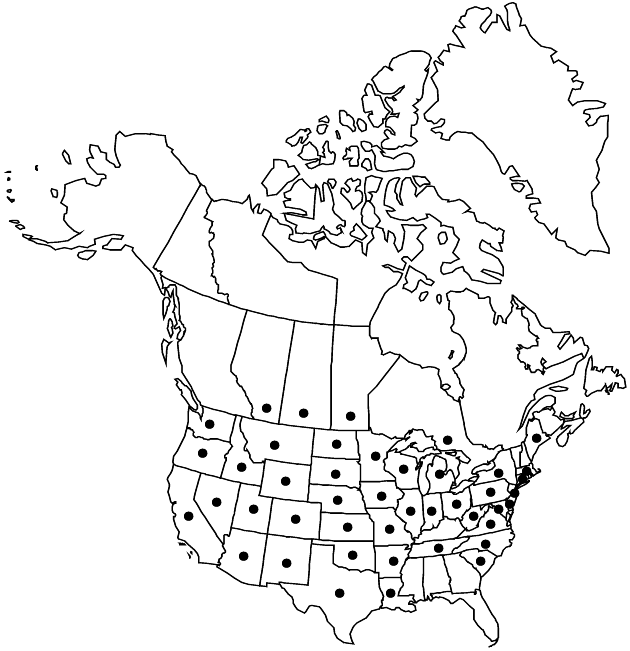Helianthus petiolaris
J. Acad. Nat. Sci. Philadelphia 2: 115. 1821.
Annuals, 40–200 cm. Stems erect, usually densely canescent, hispid, or strigillose, rarely ± hirsute or glabrate. Leaves mostly cauline; mostly alternate; petioles 2–4 cm; blades (often bluish green) lanceolate to deltate-ovate or ovate, 4–15 × 1–8 cm, bases subcordate or truncate to cuneate, margins entire or ± serrate, abaxial faces strigose, sparsely to densely, or not at all, gland-dotted. Heads 1–5. Peduncles 4–15(–40) cm. Involucres ± hemispheric, 10–24 mm diam. Phyllaries 14–25, lance-linear to lanceolate to lance-ovate, 10–14 × 1–4(–5) mm, (margins sometimes ciliate) apices short-attenuate, abaxial faces usually hispidulous, rarely sparsely hirsute to glabrate. Paleae 4.5–7.5 mm, 3-toothed, middle teeth ± ciliate or bearded, hairs whitish, 0.5–0.7 mm. Ray florets 10–30; laminae 15–20 mm. Disc florets 50–100+; corollas 4.5–6 mm, lobes usually reddish, rarely yellow; anthers reddish to purplish, appendages purplish (style branches reddish). Cypselae 3–4.5 mm, ± villous; pappi of 2 aristate scales 1.5–3 mm plus 0–2 erose scales 0.3–0.5 mm. 2n = 34.
Distribution

w North America.
Discussion
Subspecies 2 (2 in the flora).
Helianthus petiolaris is adventive beyond western North America.
A third subspecies has yet to be named at that rank in Helianthus petiolaris; it has been called H. petiolaris var. canescens A. Gray. It differs in having stems, leaves, and phyllaries densely canescent and abaxial faces of leaves densely gland-dotted. It is additionally characterized by peduncles usually ebracteate, phyllaries 1–2 mm wide, disc corolla throats gradually narrowed distal to slight, not densely hairy basal bulges, and 2n = 34. It flowers late spring through late summer and grows on sandy soils in open areas at (10–)1000–2300 m in Arizona, California, Nevada, New Mexico, and Texas and in Mexico. It was treated as H. niveus (Bentham) Brandegee subsp. canescens (A. Gray) Heiser by C. B. Heiser et al. (1969); molecular and morphologic data appear to favor a placement within H. petiolaris.
Selected References
None.
Key
| 1 | Stems usually hispidulous to strigillose; peduncles usually bractless; phyllaries 3–5 mm wide; disc corollas: throats abruptly narrowed distal to densely hairy basal bulbs | Helianthus petiolaris subsp. petiolaris |
| 1 | Stems usually ± hispid; peduncles usually each with leafy bract subtending head; phyllaries 2–3.5 mm wide; disc corollas: throats gradually narrowed distal to slight, not densely hairy, basal bulges | Helianthus petiolaris subsp. fallax |